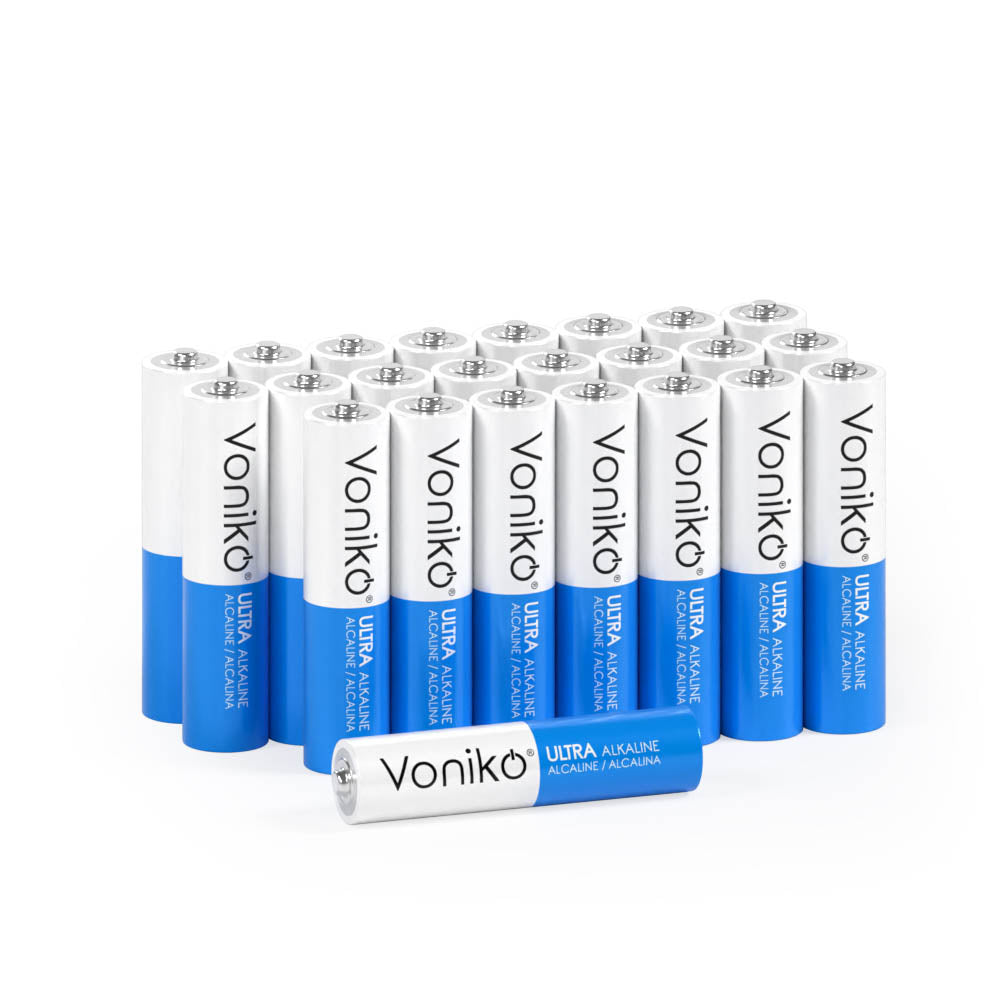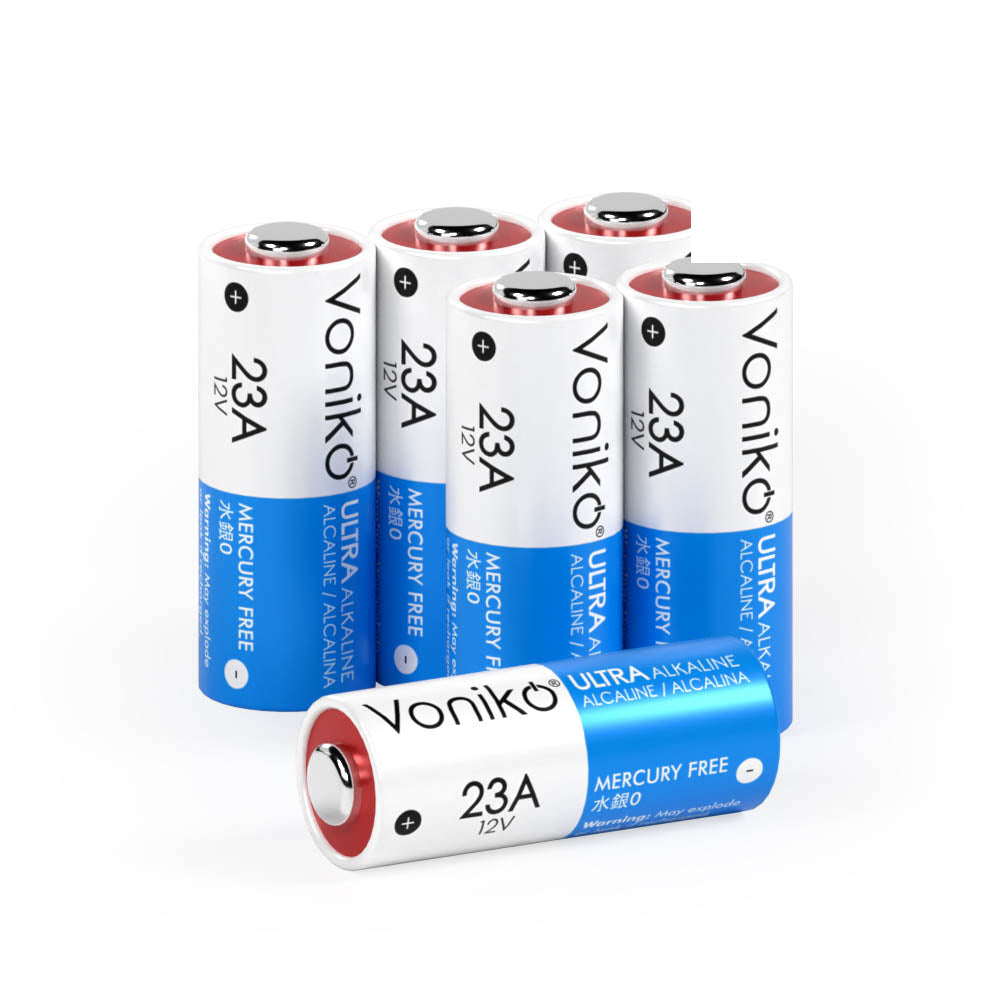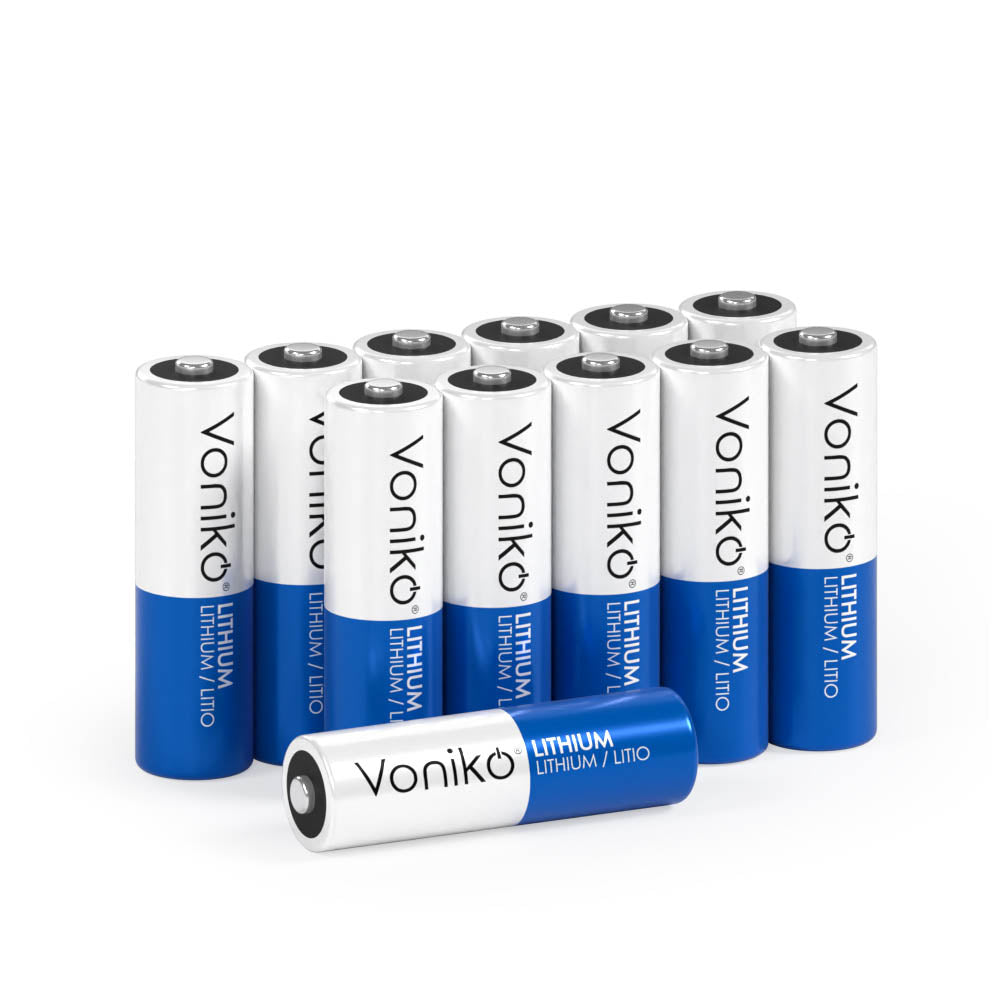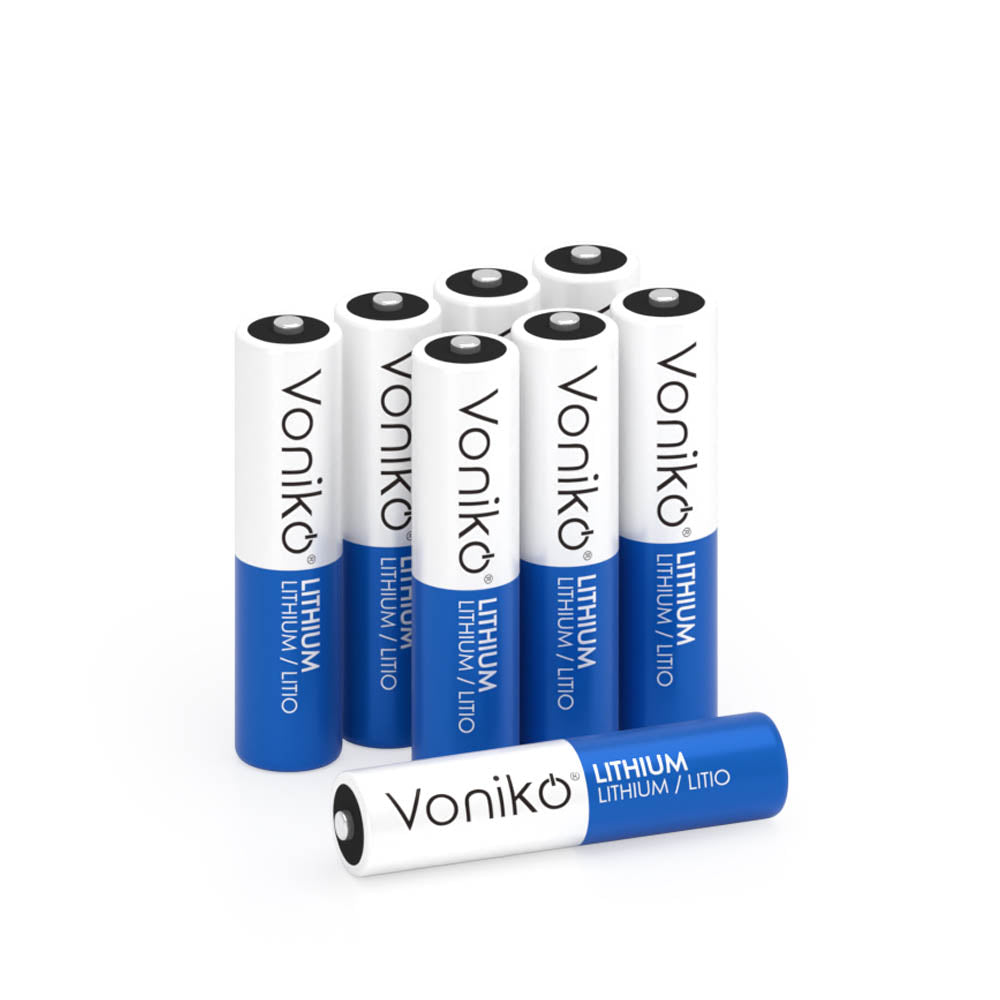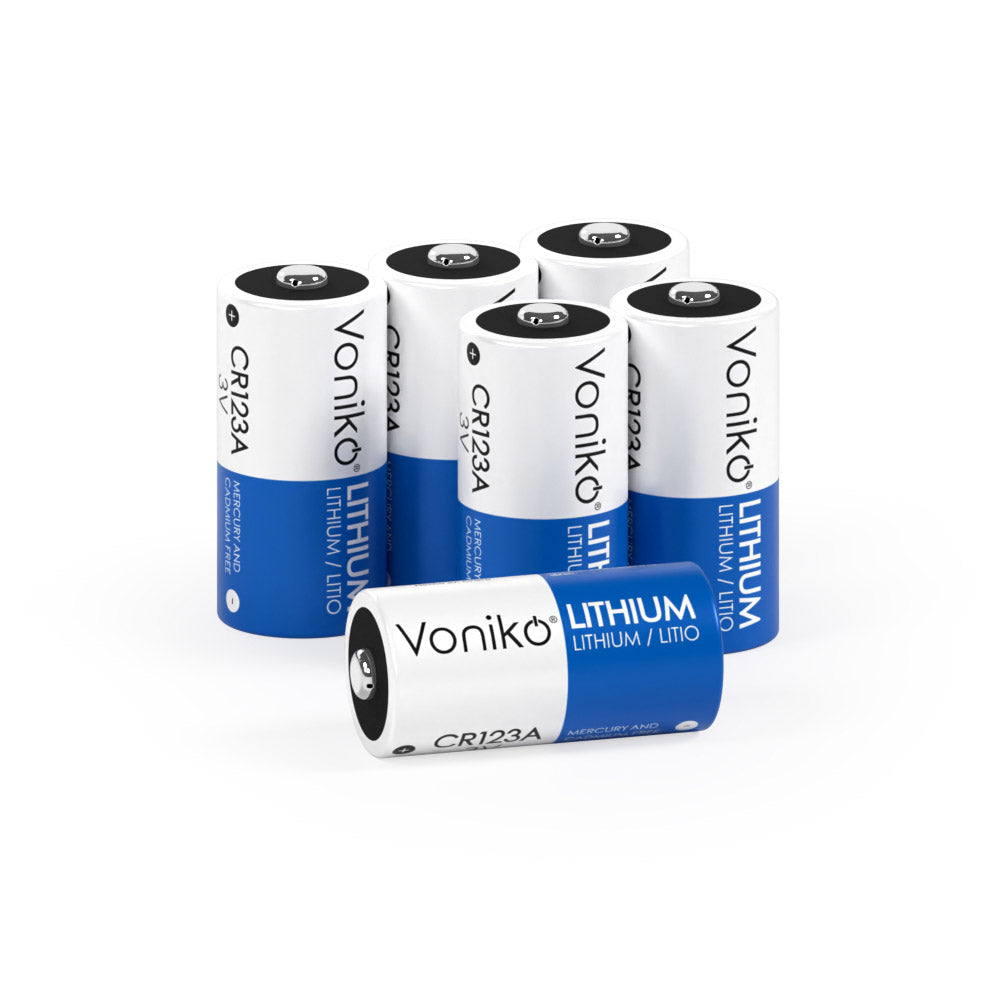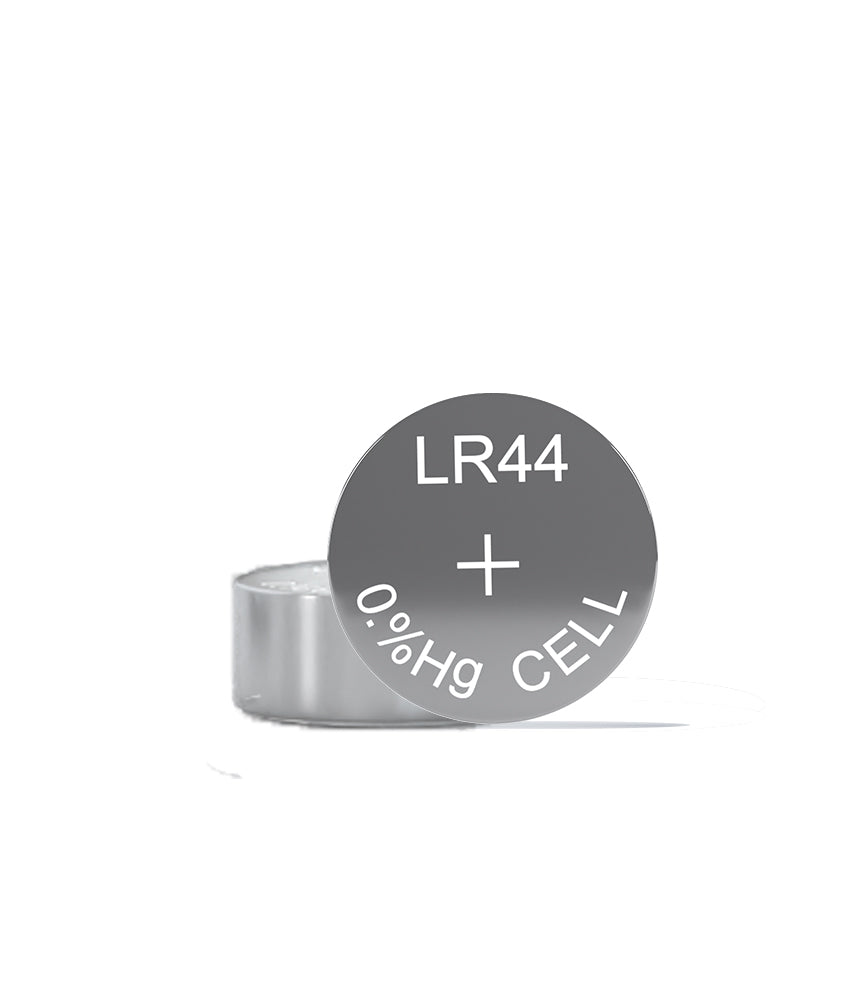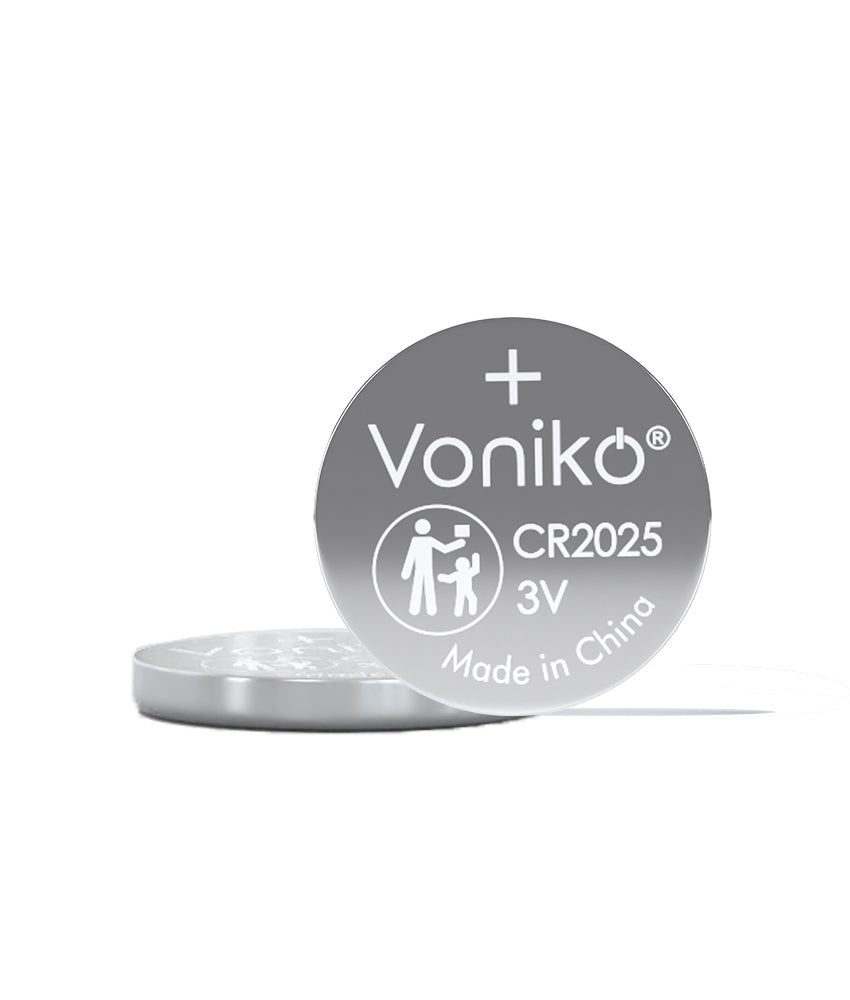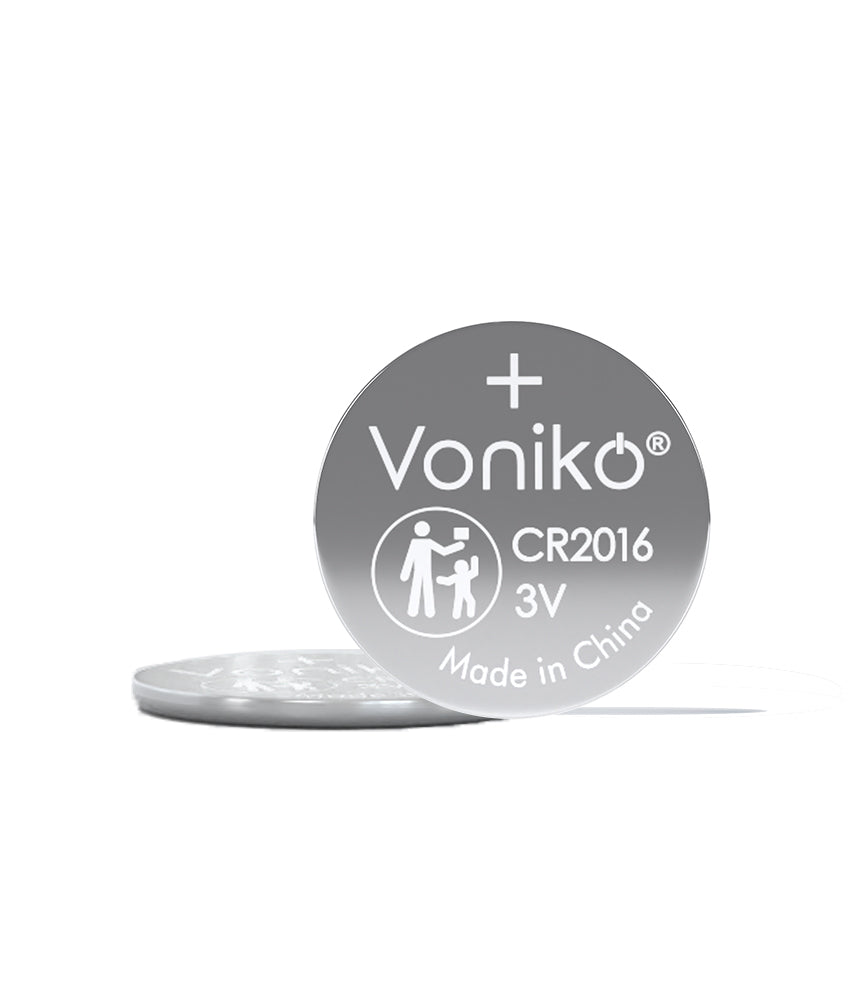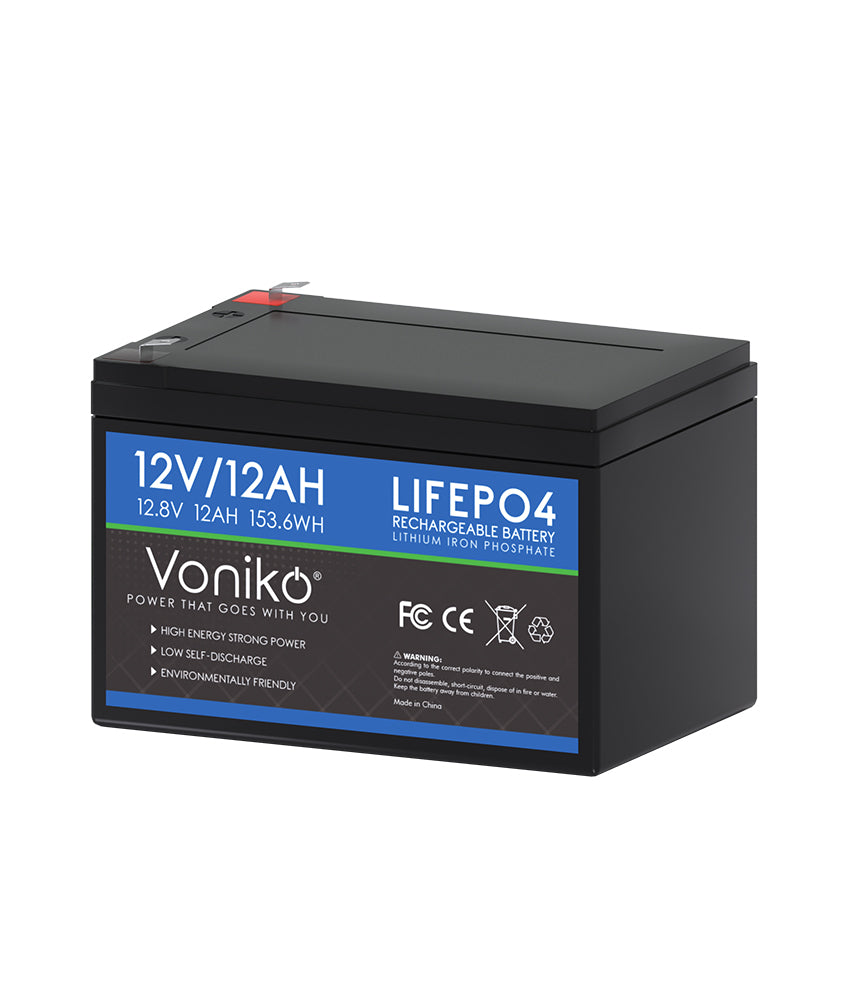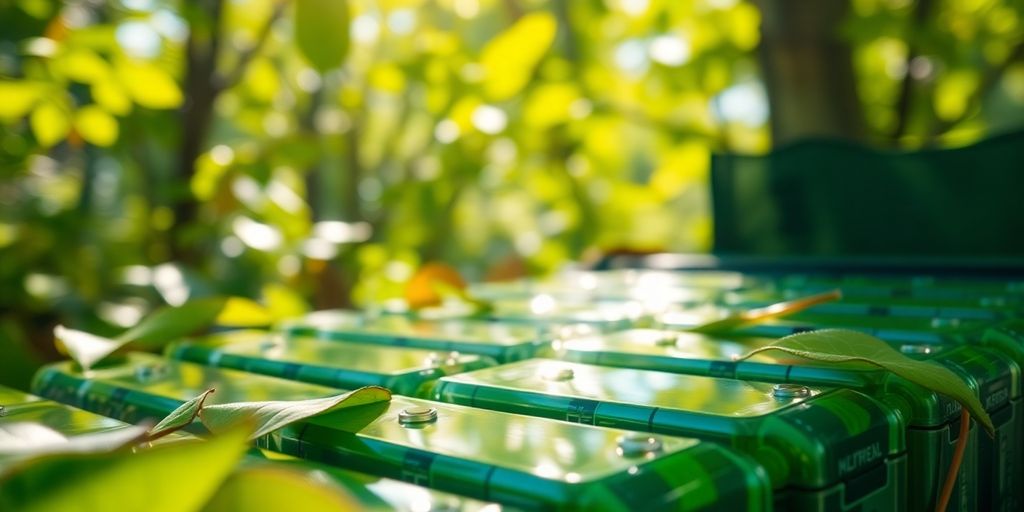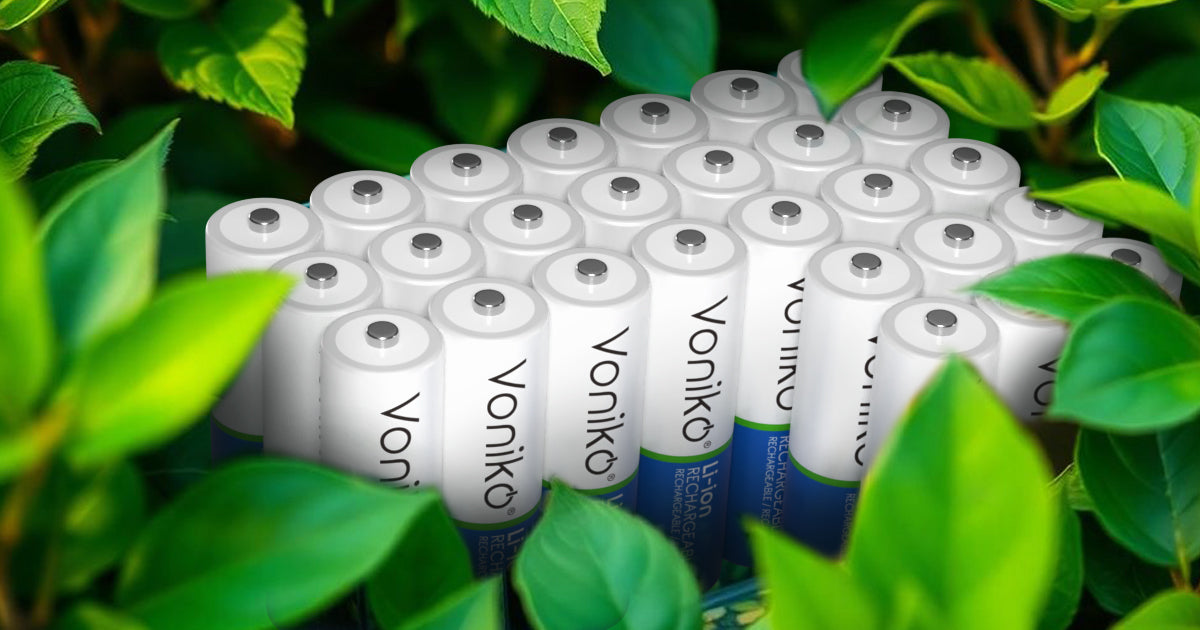Rechargeable batteries like Lithium AA Batteries are everywhere these days, from our phones to our cars and are considered green. But before we pat ourselves on the back for ditching disposables, it's important to look at what it takes to actually make these batteries and how they are recycled. It's not all sunshine and roses; there's a real environmental cost to consider.
Energy Consumption During Production
Making rechargeable batteries is an energy-intensive process. Think about it: you're taking raw materials and turning them into something complex and precise. That takes power, and a lot of it. The energy needed to produce a lithium-ion battery, especially for electric vehicles, can be a significant chunk of its total environmental footprint. This energy often comes from fossil fuels, which kind of defeats the purpose if we're trying to be green. For example, producing the batteries for electric vehicles accounts for 40 to 60 percent of total production emissions. An EV has roughly double the production footprint of a typical internal combustion engine (ICE) vehicle. A typical EV (with a 75-kWh battery pack) emits more than seven tons of CO2e emissions from the battery alone.
Carbon Footprint Analysis
Okay, so we know it takes energy to make these batteries, but what does that mean in terms of carbon emissions? A carbon footprint analysis tries to put a number on that. It looks at all the greenhouse gases released during the production process, from mining the raw materials to assembling the final product. This includes:
- Emissions from factories
- Transportation of materials
- The energy sources used in manufacturing
It's a complex calculation, but it's essential for understanding the true impact of rechargeable batteries. Reducing these embedded emissions is crucial to maximizing the environmental benefits of EVs, which could involve advancements in battery technology, more efficient manufacturing processes, and increased use of renewable energy throughout the production lifecycle.
Comparison With Traditional Batteries
So, are rechargeable batteries really better than traditional, disposable ones? It's not a simple yes or no. Traditional batteries have their own problems, like the toxic chemicals they contain and the fact that they end up in landfills. Rechargeable batteries might have a bigger upfront environmental cost, but they last longer. The key is to look at the entire lifecycle of both types of batteries to see which one comes out ahead in the long run. Here's a quick comparison:
| Feature | Rechargeable Batteries | Traditional Batteries |
|---|---|---|
| Lifespan | Longer | Shorter |
| Initial Impact | Higher | Lower |
| Disposal Issues | Complex Recycling | Landfill Waste |
| Material Sourcing | Can be problematic | Varies |
Environmental Benefits Of Rechargeable Batteries

Reduction In Greenhouse Gas Emissions
Rechargeable batteries, especially lithium-ion ones, are often touted as a key part of moving away from fossil fuels. The big idea is that they help cut down on greenhouse gas emissions, especially when used in electric vehicles (EVs). EVs don't directly burn gasoline, so they produce less air pollution and fewer carbon emissions compared to traditional cars. Plus, rechargeable batteries are essential for storing energy from renewable sources like solar and wind power. This helps make sure we have a steady power supply, even when the sun isn't shining or the wind isn't blowing.
Longer Lifespan Compared To Disposable Batteries
One of the main advantages of rechargeable batteries is that they last way longer than disposable ones. You can recharge them hundreds, or even thousands, of times before they need to be replaced. This extended lifespan means fewer batteries end up in landfills, which reduces waste and the need for new raw materials. Think about how many AA batteries you go through in a year – switching to rechargeables can make a real difference. It's not just about convenience; it's about cutting down on environmental impact.
Potential For Renewable Energy Integration
Rechargeable batteries are super important for using renewable energy effectively. Solar and wind power are great, but they're not always consistent. Batteries can store the extra energy produced during sunny or windy times and then release it when needed. This helps smooth out the power supply and makes renewable energy more reliable. Grid-scale battery storage is becoming more common, which helps integrate renewable energy into our national grids. This is a big step towards a more sustainable energy system. I think it's a great idea to use batteries to store energy, it makes a lot of sense.
Challenges In Lithium Battery Production
Lithium batteries are supposed to be a green solution, helping us use less fossil fuels and fight climate change by cutting down on emissions. They're in everything from electric cars to phones, making them a big part of the move to clean energy. But, getting and processing the lithium and other rare earth metals that these batteries need can really hurt the environment and the people who live nearby. As we need more and more of these batteries, these problems just get bigger.
Environmental Degradation From Mining
Mining lithium can seriously mess up the environment. Both the way they dig it out of the ground and the chemicals they use can cause big problems. For example, in South America, where a lot of lithium comes from salt flats, they use tons of water to pump up the lithium-rich brine. This can dry out the land, hurt local farmers, and even change the whole ecosystem. Plus, the dust from mining can pollute the air and make people sick. It's a tough situation because we need lithium for clean energy, but getting it can cause a lot of damage.
Water Usage And Contamination Issues
Extracting lithium takes a LOT of water, which can be a huge problem in dry areas. For example, in places like the Atacama Desert, where they get lithium from brine, the mining uses so much water that it can dry up rivers and hurt local communities that depend on that water for drinking and farming. Also, the chemicals they use to process the lithium can leak into the water and soil, making it unsafe for people and wildlife. It's a tricky balance to try and get the lithium we need without messing up the water supply and hurting the environment.
Socio-Economic Impacts On Local Communities
Mining for lithium can also have a big impact on the people who live near the mines. Sometimes, these communities don't get much say in whether a mine opens up, and they might not get many of the benefits, like jobs or money. Instead, they might have to deal with the pollution, the loss of their land, and changes to their way of life. It's important to make sure that these communities are involved in the decisions about mining and that they get a fair share of the benefits, so they're not just left with the problems.
The Lifecycle Of Rechargeable Batteries
From Extraction To Disposal
The journey of a rechargeable battery is quite something, starting way before you even buy it and lasting long after you toss it out (hopefully for recycling!). It all kicks off with extracting raw materials like lithium, cobalt, and nickel. These materials usually come from mines scattered around the globe. After extraction, these materials are processed and refined, then shipped off to battery manufacturing plants. Once the battery is assembled, it's used in our devices until it eventually loses its ability to hold a charge. Finally, it enters the disposal or recycling phase, which, honestly, is where things can get tricky if not handled correctly.
Recycling Processes And Their Effectiveness
Okay, so what happens when your rechargeable battery dies? Ideally, it gets recycled. But recycling these batteries isn't as straightforward as recycling paper or plastic. There are different recycling methods, like pyrometallurgy (using high temperatures to recover metals) and hydrometallurgy (using chemical solutions). The effectiveness of these methods varies, and it's not always possible to recover all the valuable materials. Plus, the infrastructure for battery recycling isn't as widespread as it needs to be, which means a lot of batteries still end up in landfills. Improving recycling efficiency and expanding recycling programs are key to reducing the environmental impact of rechargeable batteries.
End-Of-Life Management Strategies
So, what can we do to better manage batteries at the end of their life? Well, a few things. First, we need better collection programs to make it easier for people to recycle their batteries. Second, we need to invest in research and development to improve recycling technologies and make them more cost-effective. Third, we need regulations and policies that encourage battery manufacturers to design batteries that are easier to recycle. And finally, we need to educate consumers about the importance of proper battery disposal. It's a multi-pronged approach, but it's essential for creating a more sustainable battery lifecycle.
Innovations In Battery Technology
Advancements In Sustainable Materials
Okay, so everyone's talking about making batteries greener, right? Well, it's not just talk. There's real work happening with new materials that could seriously cut down on the environmental damage. For example, people are looking into using stuff that's easier to get and less toxic than what's currently used. Think about it: less nasty mining, less pollution. That's the goal, anyway. It's still early days, but the research is promising. They're trying to find materials that not only are better for the planet but also make the batteries work just as well, or even better. It's a tough challenge, but if they crack it, it'll be a game-changer.
Improving Energy Density And Efficiency
One of the big things battery scientists are trying to do is pack more power into smaller batteries. Why? Because if you can get more energy out of a smaller battery, you need fewer batteries overall. That means less mining for materials, less waste, and all that good stuff. Plus, more efficient batteries mean your devices last longer on a single charge. I mean, who doesn't want that? So, they're tweaking the chemistry and the design of batteries to squeeze every last drop of energy out of them. It's like trying to build a better engine, but for electricity. It's a constant process of improvement, and every little bit helps.
Emerging Alternatives To Lithium-Ion Batteries
Okay, so lithium-ion batteries are everywhere, but they're not perfect. Mining lithium can be a real pain for the environment, and there are concerns about how much lithium is actually available. That's why scientists are looking at other options. Sodium-ion batteries are one possibility. Sodium is way more common than lithium, so it could be a more sustainable choice. Solid-state batteries are another one. They could be safer and hold more energy. Lithium-sulfur batteries are also being explored. The thing is, none of these alternatives are quite ready to replace lithium-ion batteries just yet. But the research is moving fast, and who knows? Maybe in a few years, we'll all be using something completely different.
Comparative Analysis Of Environmental Footprints
Assessing Overall Lifecycle Emissions
Okay, so when we talk about whether rechargeable batteries are actually better for the planet, we've got to look at the whole picture. It's not just about what happens when you toss a disposable battery in the trash. We need to consider everything – from digging up the raw materials to making the battery, shipping it around, using it, and then, finally, what happens when it's done. This 'cradle-to-grave' approach is key to understanding the real environmental cost.
Think of it like this: a rechargeable battery might take more energy to make than a regular one. But if it lasts for hundreds of charges, that initial impact gets spread out over a much longer time. We have to weigh that against the constant stream of resources and waste that comes with using and throwing away disposables. It's a complex calculation, and the answer isn't always clear-cut. Things like the type of materials used, how efficient the manufacturing process is, and even how far the battery travels all play a role.
Impact Of Charging Sources On Footprint
Where you get your electricity to charge your devices matters a LOT. If you're plugging into a grid powered by coal, you're still contributing to pollution, even if you're using a fancy rechargeable battery. On the other hand, if you're charging with solar panels, you're drastically reducing your environmental impact. It's a pretty big deal.
Here's the thing:
- The source of electricity directly affects the carbon footprint.
- Renewable energy sources make rechargeable batteries way greener.
- Fossil fuel-based electricity kind of defeats the purpose.
So, if you're serious about being eco-friendly, think about where your power comes from. Switching to renewable energy can make a huge difference, not just for your batteries, but for everything else you power too.
Evaluating Long-Term Sustainability
Looking ahead, it's not just about individual batteries, it's about the whole system. Can we keep digging up lithium and other materials at the rate we are now? What happens when millions of electric car batteries need to be recycled? These are the questions we need to be asking.
We need to:
- Develop better recycling processes to recover valuable materials.
- Find more sustainable materials to use in batteries.
- Design batteries that last longer and are easier to recycle.
If we don't address these challenges, the environmental benefits of rechargeable batteries could be overshadowed by the problems they create down the road. It's about making sure that going green today doesn't cause bigger problems tomorrow.
Future Directions For Sustainable Battery Use
Policy Recommendations For Battery Production
Okay, so, when it comes to making batteries more sustainable, policy plays a huge role. I think governments should push for stricter rules about how companies get the raw materials. We need to make sure mining companies are held responsible for any damage they do to the environment. It's also important to have rules about recycling batteries, so fewer end up in landfills. Maybe tax breaks for companies that use recycled materials could help too.
Encouraging Renewable Energy Use
It's kind of obvious, but the way we charge our batteries matters a lot. If you're charging your electric car with power from a coal plant, you're not really helping the environment that much. We need to make it easier and cheaper for people to use renewable energy sources like solar and wind. I saw this thing the other day about community solar projects, where a bunch of people share a solar farm. That seems like a cool idea. Plus, if more people use renewable energy, the whole grid gets cleaner, which is good for everything.
Consumer Awareness And Education
Honestly, most people don't think much about where their batteries come from or where they go when they're done. We need to get the word out about the environmental impact of batteries. Maybe schools could teach kids about it, or there could be public service announcements. I think if people knew more, they'd be more likely to make better choices, like buying batteries with longer lifespans or recycling them properly. It's all about making it easy for people to do the right thing. I know I'd be more likely to recycle my old phone if there was a convenient drop-off spot nearby.
As we look ahead, it's clear that sustainable battery use is crucial for our planet's future. We need to focus on developing better recycling methods, using eco-friendly materials, and improving battery technology. Everyone can play a part in this change! Visit our website to learn more about how you can help make a difference in battery sustainability today!
Final Thoughts on Rechargeable Batteries and Their Environmental Impact
In the end, it’s clear that rechargeable batteries, like lithium-ion ones, have a mixed bag when it comes to their environmental impact. Sure, they help reduce our reliance on fossil fuels, especially in electric vehicles, but the production process is a real doozy. Mining for lithium and other materials can wreak havoc on the environment and local communities. Plus, the energy used in making these batteries often comes from non-renewable sources, which adds to the problem. So, while rechargeable batteries can be a step in the right direction, we need to keep pushing for better practices and technologies. It’s all about finding a balance and making sure that the benefits outweigh the costs.

